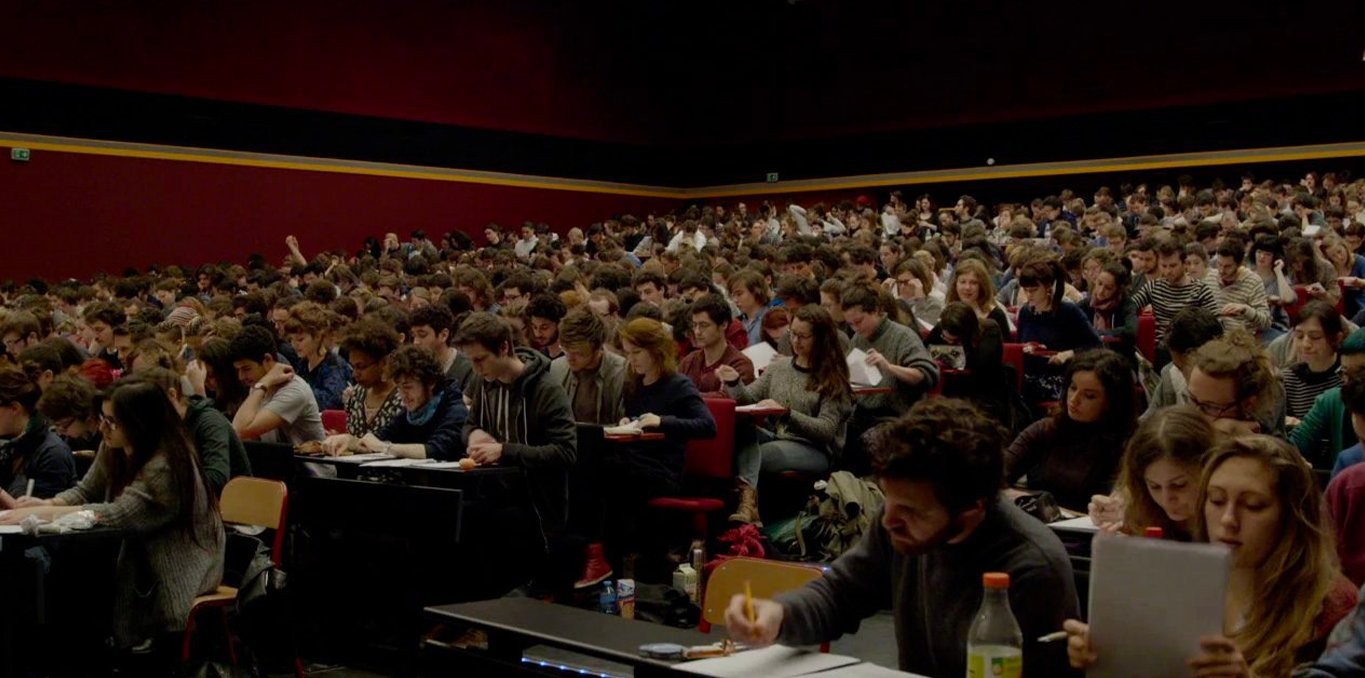Le Concours

It’s the day of the entrance exam. Aspiring filmmakers step through the heavy gates of La Fémis for the first time. Each of them dreams of cinema, but also of success. Every hope is allowed, every anxiety as well. The juries deliberate, searching for their worthy successors. From the arrival of the candidates to the final deliberations, the film explores the confrontation between two generations and the arduous selection process that our societies put in place.
| Directors | Claire Simon, Claire Simon |
| Actors | Naomie Décarie-Daigneault, Naomie Décarie-Daigneault |
| Share on |
Claire Simon taught for ten years at La Fémis, heading the directing department. So when she set out to document the selection process for the school’s future students, she knew the institution from the inside. Filming the different stages of the entrance exam (written tests, oral interviews, short shoots, even drawing exercises), the filmmaker focuses in particular—and quite rightly—on the juries: cinema professionals representing the various teaching departments.
What emerges is a close examination of a whole set of rituals (pre-selection, the intimidating entry into the crowded auditorium, the strict procedures, the time limits on each test), psychological mechanisms (projections, idealizations, aversions), and sociological mechanisms (class reproduction, unconscious bias, internalized sexism) that lead a milieu to select its successors.
We watch, astonished, as the backstage of a process that usually presents itself as neutral and objective comes to light. What is finally revealed here is what more and more people in the film world are acknowledging: the definition of “quality” is necessarily cultural—much to the dismay of those who still essentialize genius and merit. And it is utterly fascinating to observe the cultures at work. Who wants to glorify what? Who projects themselves onto which behavior? What resentments color a judgment? What traits or attitudes does someone want to see triumph? Coherence and distance—qualities one would expect to be guiding such a process—are constantly shaken, and the internal battles that surface to question the mechanics of selection tell us a great deal about the art world and the old reflexes it still carries.
If it seems impossible to imagine a day when candidates could be admitted on fully representative (and by what standard?) and ethical grounds, there are nonetheless strategies that can mitigate bias: anonymizing the process, ensuring equity and diversity among jurors as well as candidates, diversifying evaluation methods, and so on. Hopefully, the reflexive exercise made possible by the film served as a small examination of conscience. Sometimes an educational institution must put itself to the test!
Naomie Décarie-Daigneault
Tënk's Artistic Director

-

Français
2h00
Language: Français -

English
2h00
Language: English
Subtitles: English
- Année 2017
- Pays France
- Durée 120
- Producteur Andolfi, Mouvement
- Langue French
- Sous-titres English
- Résumé court From the open house to the final oral exam, how are aspiring filmmakers selected in the competitive admissions process at La Fémis?
- Ordre 1
- TLF_Applismb_CA 1
- Date édito CA 2025-09-05
- Rail-perso-home 1
Claire Simon taught for ten years at La Fémis, heading the directing department. So when she set out to document the selection process for the school’s future students, she knew the institution from the inside. Filming the different stages of the entrance exam (written tests, oral interviews, short shoots, even drawing exercises), the filmmaker focuses in particular—and quite rightly—on the juries: cinema professionals representing the various teaching departments.
What emerges is a close examination of a whole set of rituals (pre-selection, the intimidating entry into the crowded auditorium, the strict procedures, the time limits on each test), psychological mechanisms (projections, idealizations, aversions), and sociological mechanisms (class reproduction, unconscious bias, internalized sexism) that lead a milieu to select its successors.
We watch, astonished, as the backstage of a process that usually presents itself as neutral and objective comes to light. What is finally revealed here is what more and more people in the film world are acknowledging: the definition of “quality” is necessarily cultural—much to the dismay of those who still essentialize genius and merit. And it is utterly fascinating to observe the cultures at work. Who wants to glorify what? Who projects themselves onto which behavior? What resentments color a judgment? What traits or attitudes does someone want to see triumph? Coherence and distance—qualities one would expect to be guiding such a process—are constantly shaken, and the internal battles that surface to question the mechanics of selection tell us a great deal about the art world and the old reflexes it still carries.
If it seems impossible to imagine a day when candidates could be admitted on fully representative (and by what standard?) and ethical grounds, there are nonetheless strategies that can mitigate bias: anonymizing the process, ensuring equity and diversity among jurors as well as candidates, diversifying evaluation methods, and so on. Hopefully, the reflexive exercise made possible by the film served as a small examination of conscience. Sometimes an educational institution must put itself to the test!
Naomie Décarie-Daigneault
Tënk's Artistic Director
-

Français
Duration: 2h00Language: Français2h00 -

English
Duration: 2h00Language: English
Subtitles: English2h00
- Année 2017
- Pays France
- Durée 120
- Producteur Andolfi, Mouvement
- Langue French
- Sous-titres English
- Résumé court From the open house to the final oral exam, how are aspiring filmmakers selected in the competitive admissions process at La Fémis?
- Ordre 1
- TLF_Applismb_CA 1
- Date édito CA 2025-09-05
- Rail-perso-home 1
